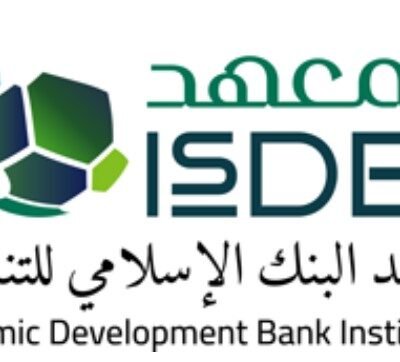Real estate professionals face strict documentation requirements, with email records serving as critical evidence in transactions. Recent industry data shows 78% of property deals involve substantial email communication that must be archived for 3-7 years. Converting these communications presents technical challenges, especially with proprietary formats. Specialized conversion utilities streamline the process of transforming msg to pdf, ensuring proper preservation of attachments like contracts and inspection reports. This universal format maintains formatting integrity while enabling searchability and cross-platform accessibility, essential for compliance with real estate regulatory requirements.
Understanding MSG and PDF formats in real estate communication
MSG files are proprietary email formats created by Microsoft Outlook, commonly used in real estate offices. These files contain message text, formatting, metadata, attachments, and conversation threads relevant to property transactions.
PDF represents a universal, platform-independent standard that preserves document formatting regardless of the viewing device or software. This format maintains visual fidelity while enabling features like text searching, digital signatures, and security controls.
For real estate professionals, these format differences matter when dealing with long-term document retention requirements.
Why convert property email chains to PDF
Converting property-related email chains to PDF format addresses several critical needs in real estate documentation. Legal requirements in many jurisdictions mandate maintaining accessible records of all transaction-related communications for periods ranging from three to seven years.
PDF conversion enables:
- Compliance with record-keeping regulations specific to property transactions
- Creation of tamper-evident documentation for potential dispute resolution
- Platform-independent access to critical communications
- Simplified sharing with clients, legal teams, and regulatory bodies
- Protection against email system migrations or failures
- Improved searchability across entire communication threads
These benefits prove particularly valuable when documenting complex negotiations, contingency removals, or disclosure acknowledgments that frequently occur via email rather than through formal contracts. Converting these communications to PDF preserves their evidentiary value while enhancing accessibility.
Email chain components critical for real estate documentation
When converting property email chains, certain elements require careful preservation to maintain their documentary value. These include transaction timestamps, which establish chronology for time-sensitive negotiations, and complete sender/recipient information that verifies communication parties.
Property-specific attachments like inspection reports, disclosure documents, and floor plans must remain accessible and properly associated with relevant messages. Email signatures often contain license numbers and brokerage affiliations required by real estate regulations.
Conversation threading must be maintained to show the context and development of negotiations. Many jurisdictions require preservation of header information showing routing details to verify authenticity. Reply relationships between messages help establish the evolution of agreements and demonstrate how contingencies were addressed throughout the transaction process.
Automated solutions for converting property email chains
Professional email conversion tools offer comprehensive solutions for real estate offices handling substantial documentation needs. These specialized utilities can process batches of hundreds or thousands of MSG files simultaneously, preserving critical metadata and attachments required for complete transaction records.
The typical conversion process follows these steps:
- Import MSG files from designated storage locations or Outlook folders
- Configure output settings (resolution, compression, attachment handling)
- Apply batch processing to convert multiple threads simultaneously
- Organize output PDFs using automated naming conventions
- Verify conversion quality and completeness
- Store resulting PDFs in appropriate document management systems
Automated solutions particularly benefit larger brokerages where transaction volume necessitates efficient processing. These tools typically handle property-specific attachments by either embedding them directly in the PDF or maintaining them as separate files with appropriate linking. High-quality conversion utilities preserve formatting, images, and hyperlinks while ensuring all content remains searchable—a critical feature when retrieving specific property details from extensive communication archives.
Manual methods for converting individual property emails
For smaller real estate offices or individual agents handling fewer transactions, manual conversion methods offer practical alternatives. Using Outlook’s built-in functionality, professionals can convert important property communications directly to PDF through the Print option, selecting Microsoft Print to PDF as the destination.
Manual conversion advantages and limitations include:
- Simple process requiring no additional software purchases
- Direct control over which specific messages are converted
- No learning curve for new tools or systems
- Limited batch processing capabilities
- Time-consuming for high-volume requirements
- Inconsistent handling of complex attachments
Similar functionality exists in web-based email platforms like Gmail, where the Print option includes a Save as PDF feature. Thunderbird users can utilize the built-in PDF export feature that handles formatting particularly well. For these manual methods, establishing clear naming conventions becomes especially important, as they lack the automated organization features of specialized tools.
Preserving attachments and formatting in property email conversions
Property transactions typically involve numerous attachments—contracts, disclosures, inspection reports, photographs, and floor plans—that must remain accessible after conversion. Different conversion approaches handle these attachments in distinct ways that impact their utility as documentation.
Quality conversion solutions preserve both the visual representation of emails and their attachments, maintaining the relationship between messages and supporting documents. Best practices include using tools that embed viewable versions of common document types directly in the PDF.
For property images, preservation of color accuracy and resolution remains essential, particularly for condition documentation or property marketing materials.
Organizing converted property email PDFs effectively
Implementing systematic organization for converted email PDFs improves their utility in busy real estate practices. Property-centric folder structures create logical groupings that mirror transaction workflows, making retrieval intuitive for team members.
Recommended practices for organizing converted emails include:
- Developing consistent file naming conventions incorporating property addresses
- Creating chronological prefixes for file names to maintain conversation sequence
- Implementing transaction stage identifiers in folder structures
- Establishing separate archives for active versus closed transactions
Most professionals find that organizing by property address, then by transaction phase creates the most intuitive structure.
Conclusion
Converting property email chains from MSG to PDF format represents a critical best practice for real estate documentation. This process preserves essential communication records in an accessible format that satisfies both practical needs and regulatory requirements. As digital communication continues to dominate real estate transactions, proper email conversion and archiving remains fundamental to professional risk management and operational efficiency.





